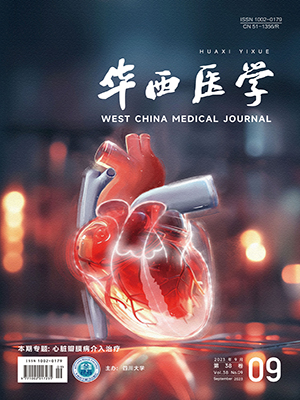目的 分析下肢慢性創傷性骨髓炎患者創面細菌培養分布情況,為臨床用藥提供依據。 方法 對2006年1月-2010年12月收治的91例慢性骨髓炎患者創面分泌物細菌培養標本結果進行回顧性調查分析。其中男78例,女13例;年齡5~78歲,平均41.3歲。病程47 d~7個月,平均68.6 d。使用抗生素總療程均>7 d。 結果 65例創面細菌培養陽性患者共分離出113株病原菌,其中G?菌72株,占63.71%;G+菌41株,占36.28%。藥敏結果顯示,G+菌對常規青霉素類基本耐藥,碳青霉烯類耐藥菌株少見,對萬古霉素耐藥菌株尚未出現。G?菌對青霉素類及頭孢菌素類耐藥較高,對頭孢哌酮-舒巴坦無耐藥。 結論 加強對慢性創傷性骨髓炎患者創面病原菌監測極為必要,對臨床抗生素的合理使用具有一定的指導意義。
Objective To analyze the distribution of cultured bacteria from chronic osteomyelitis patients, and provide a basis for clinical medicine. Methods We retrospectively analyzed the bacterial culture results of the secretions from 91 patients with chronic osteomyelitis treated in our hospital from January 2006 to December 2010. Among them, there were 78 males and 13 females aged from 5 to 78 years averaging at (41.3 ± 8.35) years. The duration of the disease ranged from 47 days to more than 7 months, averaging (68.6 ± 14.57) days. The total course of antibiotic-taking was longer than 7 days for all the patients. Results A total of 113 pathogen strains were isolated from 65 secretion samples, including 72 Gram-negative bacteria accounting for 63.71% and 41 gram-positive bacteria accounting for 36.28%. Drug susceptibility results showed basic resistance of Gram-positive bacteria to conventional penicillin, rare resistance to carbapenem, and no resistance to vancomycin. Gram-negative bacteria were basically resistant to penicillin and cephalosporins, but not resistant to cefoperazone-sulbactam. Conclusion Enhancing the monitoring of pathogens for patients with chronic osteomyelitis is extremely necessary for the rational clinical use of antibiotics.
引用本文: 董洪先,黃富國,鐘剛,肖聰,劉國明,靳家誠,陳彥影. 下肢慢性創傷性骨髓炎患者感染病原菌情況分析. 華西醫學, 2012, 27(1): 28-32. doi: CNKI: 51-1356/R.20120115.1604.045 復制




